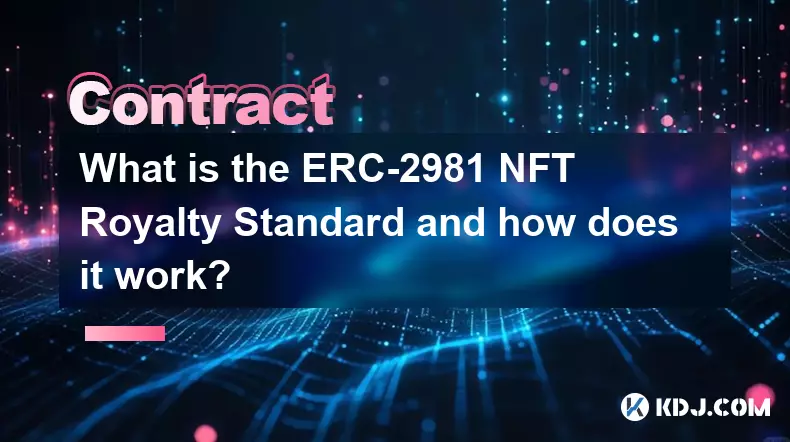-
 bitcoin
bitcoin $99296.318777 USD
-2.82% -
 ethereum
ethereum $3203.465899 USD
-6.84% -
 tether
tether $0.999590 USD
-0.03% -
 xrp
xrp $2.308913 USD
-4.00% -
 bnb
bnb $922.788929 USD
-3.53% -
 solana
solana $144.020807 USD
-5.89% -
 usd-coin
usd-coin $0.999798 USD
0.00% -
 tron
tron $0.291590 USD
-1.12% -
 dogecoin
dogecoin $0.163780 USD
-4.46% -
 cardano
cardano $0.526919 USD
-4.40% -
 hyperliquid
hyperliquid $37.888865 USD
-2.24% -
 bitcoin-cash
bitcoin-cash $510.515457 USD
-1.08% -
 chainlink
chainlink $14.436987 USD
-5.63% -
 stellar
stellar $0.267345 USD
-4.77% -
 unus-sed-leo
unus-sed-leo $9.175222 USD
0.53%
What is a Merkle Tree and how is it used for efficient data verification in smart contracts?
Merkle Trees enable secure, efficient data verification in blockchains by summarizing transactions into a single root hash, allowing lightweight clients to validate data without storing entire blocks.
Nov 11, 2025 at 02:40 am

Understanding the Merkle Tree in Blockchain Systems
1. A Merkle Tree, also known as a hash tree, is a cryptographic structure used to store data in a way that allows for efficient and secure verification of large datasets. Each leaf node contains the hash of a data block, while non-leaf nodes contain the hash of their child nodes. This hierarchical hashing ensures that any change in a single data block alters the entire path up to the root.
2. In blockchain networks, Merkle Trees are primarily used to summarize all transactions within a block. Instead of storing every transaction individually in the block header, only the Merkle Root—a single hash derived from all transaction hashes—is included. This drastically reduces the amount of data needed for validation.
3. The binary structure of a Merkle Tree enables logarithmic time complexity for verification. To confirm whether a specific transaction is part of a block, one needs only a small subset of hashes—the so-called Merkle Proof—rather than downloading and checking the full block data.
4. This efficiency is critical in decentralized systems where nodes have limited bandwidth and storage. Lightweight clients, such as mobile wallets, rely on Merkle Proofs to verify transaction inclusion without maintaining a full copy of the blockchain.
5. Because each level of the tree depends on the integrity of the level below, tampering with any transaction would require recalculating all parent hashes up to the root. This makes unauthorized alterations computationally infeasible and easily detectable.
Role of Merkle Trees in Smart Contract Execution
1. Smart contracts often need to validate external data or previous transactions without processing entire datasets. By integrating Merkle Trees, contracts can accept Merkle Proofs as input to verify that specific data was committed at a certain point in time.
2. For example, in decentralized exchanges or Layer-2 scaling solutions, off-chain transaction batches are summarized using a Merkle Root stored on-chain. When users want to withdraw funds or claim balances, they submit a Merkle Proof showing their transaction was included in the batch.
3. This mechanism minimizes gas costs because the contract does not process all transactions—only the proof path is checked. It enables scalable architectures like state channels and rollups, where thousands of operations are settled off-chain but remain verifiable on-chain.
4. Projects such as Optimistic Rollups use Merkle Trees to commit to state updates. Validators challenge incorrect assertions by providing fraud proofs based on these structures, ensuring correctness without constant on-chain computation.
5. Token distribution systems, including airdrops and vesting schedules, also leverage Merkle Trees. Instead of publishing every eligible address on-chain, a Merkle Root representing the whitelist is stored. Users claim tokens by proving membership via a compact proof, reducing storage overhead and enhancing privacy.
Security and Efficiency Benefits in Decentralized Applications
1. One major advantage of Merkle Trees is their resistance to data forgery. Since the root hash serves as a unique fingerprint of the dataset, any discrepancy invalidates the entire chain of trust. This property supports trustless interactions across distributed networks.
2. By enabling succinct proofs, Merkle Trees allow smart contracts to scale horizontally without sacrificing security or decentralization. They form the backbone of many zero-knowledge and optimistic protocol designs.
3. Data availability sampling techniques in modern consensus algorithms use Merkle Trees to ensure participants can verify that blocks are fully available without downloading them entirely. This strengthens network resilience against withholding attacks.
4. On-chain oracles and cross-chain bridges utilize Merkle Proofs to relay information securely between ecosystems. For instance, a bridge contract on Ethereum might verify that a transaction occurred on Binance Chain by checking a proof against a previously submitted root.
5. The deterministic nature of hashing ensures consistency across independent verifiers. Different nodes can arrive at the same conclusion about data validity using minimal communication, reinforcing consensus integrity.
Frequently Asked Questions
How is a Merkle Proof generated?A Merkle Proof is created by collecting the sibling hashes along the path from a given transaction’s leaf node to the root. These hashes, combined with the transaction hash and path directions (left or right), allow reconstruction of the root for comparison.
Can Merkle Trees prevent double-spending?While Merkle Trees themselves do not directly prevent double-spending, they ensure transaction immutability within a block. Combined with consensus mechanisms, they help maintain an unalterable record, making double-spending attempts evident and rejectable.
Why are Merkle Roots included in block headers?Including the Merkle Root in the block header allows any node to verify the integrity of all transactions in the block by checking just one hash. This design supports lightweight clients and enhances overall network scalability.
Are Merkle Trees quantum-resistant?The security of Merkle Trees relies on the underlying hash function. If a quantum-resistant hashing algorithm (like those in SHA-3 or post-quantum candidates) is used, the Merkle structure can remain secure even under quantum computing threats.
Disclaimer:info@kdj.com
The information provided is not trading advice. kdj.com does not assume any responsibility for any investments made based on the information provided in this article. Cryptocurrencies are highly volatile and it is highly recommended that you invest with caution after thorough research!
If you believe that the content used on this website infringes your copyright, please contact us immediately (info@kdj.com) and we will delete it promptly.
- Canary XRP ETF and Solana ETF: First-Day Activity Heats Up the Crypto ETF Race
- 2025-11-14 12:20:01
- Vitalik Buterin, Zero-Knowledge Proofs, and the Whitelist: A New Era of Trustless Crypto?
- 2025-11-14 09:00:01
- Cryptos in the Spotlight: Zero Knowledge Proof, Dogecoin, and the Shifting Tides
- 2025-11-14 08:45:01
- Staking Platforms & Crypto Income: Is $NNZ Coin the Next Big Thing?
- 2025-11-14 09:20:01
- Avalanche's SIERRA Token: A New Era for Yield Models?
- 2025-11-14 09:05:01
- Bitcoin Below $100K: Long Positions Liquidated, What's Next?
- 2025-11-14 09:40:01
Related knowledge

What is a Denial of Service (DoS) attack in a smart contract and what are its common forms?
Nov 10,2025 at 05:20am
Understanding Denial of Service in Smart Contracts1. A Denial of Service (DoS) attack in the context of smart contracts refers to a scenario where a m...

What is a cryptographic nonce used for in transaction signing?
Nov 11,2025 at 05:59am
Understanding Cryptographic Nonces in Blockchain Transactions1. A cryptographic nonce is a random or pseudo-random number used only once in the contex...

How does inheritance work in Solidity smart contracts?
Nov 11,2025 at 10:40pm
Inheritance in Solidity: Building Modular Smart Contracts1. Inheritance in Solidity allows one contract to adopt the properties and functions of anoth...

What is the difference between an Externally Owned Account (EOA) and a Contract Account?
Nov 13,2025 at 04:00am
Understanding Externally Owned Accounts (EOA)1. An Externally Owned Account is controlled directly by a private key, which means only the holder of th...

What is the ERC-2981 NFT Royalty Standard and how does it work?
Nov 13,2025 at 05:39am
Understanding the ERC-2981 NFT Royalty Standard1. The ERC-2981 standard is a proposed Ethereum Request for Comment that introduces a royalty mechanism...

What is a Minimal Proxy Contract (EIP-1167) and how does it save gas on deployment?
Nov 12,2025 at 11:39am
What is a Minimal Proxy Contract (EIP-1167)?1. A Minimal Proxy Contract, standardized under Ethereum Improvement Proposal (EIP) 1167, is a lightweight...

What is a Denial of Service (DoS) attack in a smart contract and what are its common forms?
Nov 10,2025 at 05:20am
Understanding Denial of Service in Smart Contracts1. A Denial of Service (DoS) attack in the context of smart contracts refers to a scenario where a m...

What is a cryptographic nonce used for in transaction signing?
Nov 11,2025 at 05:59am
Understanding Cryptographic Nonces in Blockchain Transactions1. A cryptographic nonce is a random or pseudo-random number used only once in the contex...

How does inheritance work in Solidity smart contracts?
Nov 11,2025 at 10:40pm
Inheritance in Solidity: Building Modular Smart Contracts1. Inheritance in Solidity allows one contract to adopt the properties and functions of anoth...

What is the difference between an Externally Owned Account (EOA) and a Contract Account?
Nov 13,2025 at 04:00am
Understanding Externally Owned Accounts (EOA)1. An Externally Owned Account is controlled directly by a private key, which means only the holder of th...

What is the ERC-2981 NFT Royalty Standard and how does it work?
Nov 13,2025 at 05:39am
Understanding the ERC-2981 NFT Royalty Standard1. The ERC-2981 standard is a proposed Ethereum Request for Comment that introduces a royalty mechanism...

What is a Minimal Proxy Contract (EIP-1167) and how does it save gas on deployment?
Nov 12,2025 at 11:39am
What is a Minimal Proxy Contract (EIP-1167)?1. A Minimal Proxy Contract, standardized under Ethereum Improvement Proposal (EIP) 1167, is a lightweight...
See all articles










































































